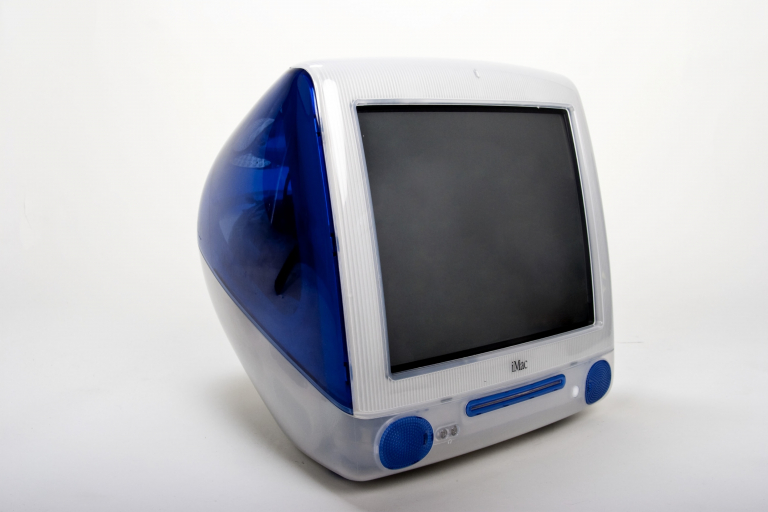9 shades of the iMac

The iMac G3 was the first model in the longstanding range. Image: Carl Berkeley/Wikipédia via AFP Relaxnews
Over the last 20 years, from the launch of the iMac G3 to the current iMac Pro, Apple’s leading desktop computer line has continued to adapt to the times with emerging technologies and stylish good looks.
iMac G3
Article continues after this advertisementManufactured from 1998 to 2003, the original iMac ushered in a revolution with its impressive design in transparent colored plastic, which allowed the engineers at Apple to include all of the computer’s components in the same enclosure as the screen, and its pioneering technological choices (no floppy disk drive, USB ports as standard, and a built-in modem).
iMac G4
The computer underwent a radical change in design with the 2002 arrival of the iMac G4. Nicknamed the “iLamp” in reference to its adjustable desk-lamp like arm, it featured a 15 to 20 inch flatscreen that was easy to reposition and no longer contained in the same enclosure as the other components. This new-generation all-in-one broke new ground with a more powerful processor (the PowerPC G4), more live memory (up to 256 megabytes of RAM) and a bigger hard drive (up to 160 gigabytes).
Article continues after this advertisementiMac G5
Launched in 2004, the iMac G5 (so named in reference to the new processor included in its design) offered a new look with an imposing 17 to 20 inch flatscreen in a five-centimeter deep enclosure that also housed all of the computer’s other components, including a CD/DVD drive.
iMac (Intel-based)
In 2006, the iMac revolution was largely internal with the adoption of processors produced by Intel (the Core Duo or latterly the Core 2 Duo). The appearance of the Intel-based machine with its white polycarbonate enclosure and 17 to 20 inch flatscreen differed little from the preceding iMac G5.
Aluminum iMac
Bigger, more stylish and, as always, more powerful, the aluminum iMac was launched in the summer of 2007. As its name suggests, the new machine featured a glass and aluminum enclosure that housed all of its components and a flatscreen that was available in sizes of up to 24 inches. With its new processor, the machine was faster than its predecessor, and it also offered more storage (upwards of 250 gigabytes) and extra live memory (1 gigabyte or more).
16:9 Unibody iMac
Launched in 2009, this was the first of the unibody iMacs, and also the first to be equipped with a 16:9 aspect ration screen, which was available in 21.5 and 27-inch sizes.
Slim Unibody iMac
At the end of 2012, Apple presented a new iMac that was much thinner but largely similar in appearance to its predecessor. It will remembered as the first iMac to include an SSD hybrid drive that was faster and more reliable than a standard disk.
iMac Retina
In 2014, Apple presented the spectacular iMac Retina 5K with a resolution of 5,120 × 2,880 pixels and a 27-inch display. A year later the firm brought out the iMac Retina 4K (3,840 × 2,160 pixels) with a smaller 21.5-inch display. The two new machines were also equipped with new AMD Radeon video cards as opposed to the nVidia chips in previous models.
iMac Pro
Most recently in 2017, Apple announced the iMac Pro, billing it as “the most powerful Mac ever made.” Aside from its darker “space gray” color, the machine appeared to be similar to its predecessors. However, under the hood there were radical technological improvements including a 5K display, 3.2 gigahertz 8-core processor, up to 128 gigabytes of RAM, and 4 terabytes of SSD storage. JB
RELATED STORIES:
Huawei teases ‘real upgrade’ for P20 Pro, Mate 20 Pro gets biggest battery yet
Samsung’s new phone shows how hardware innovation has slowed